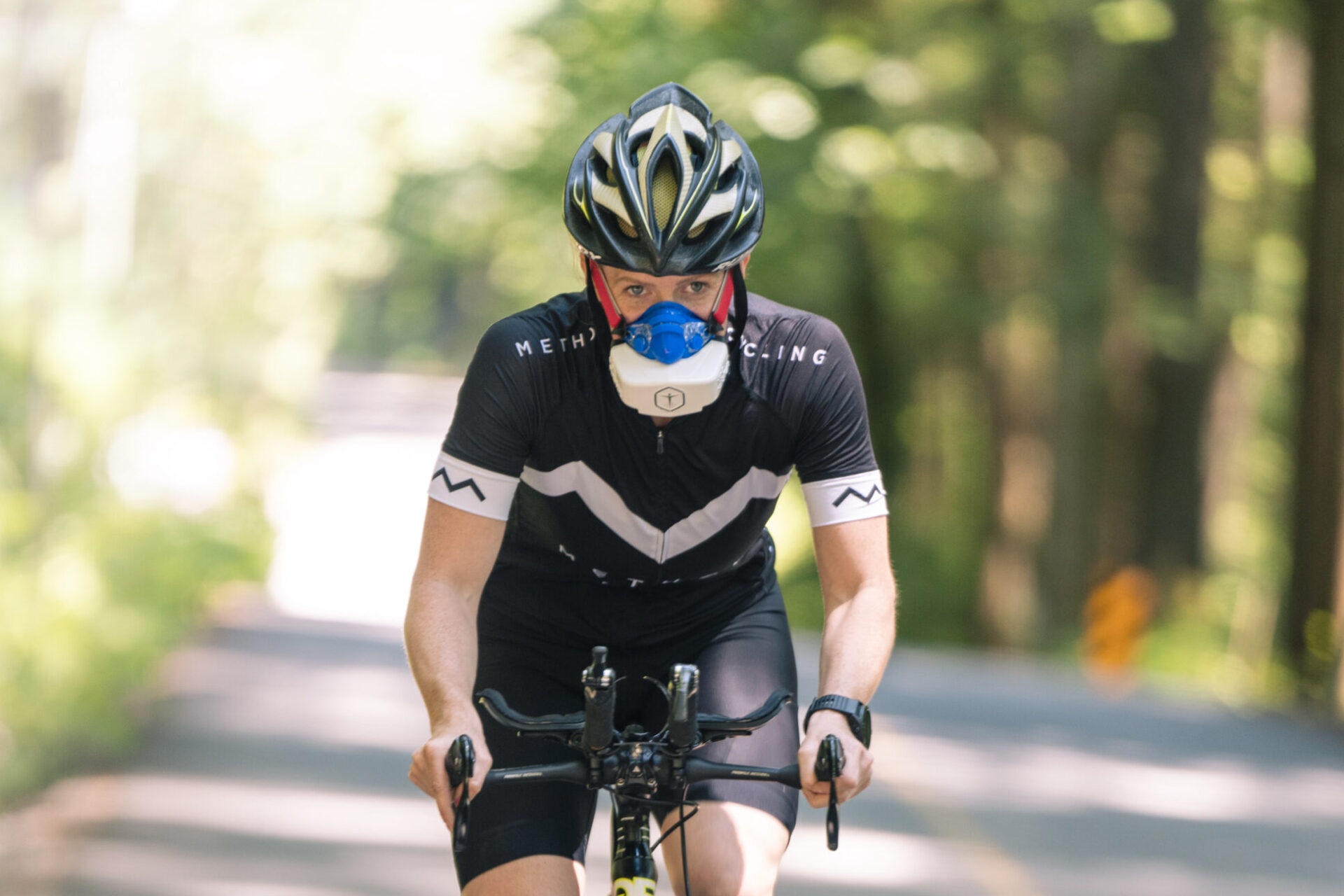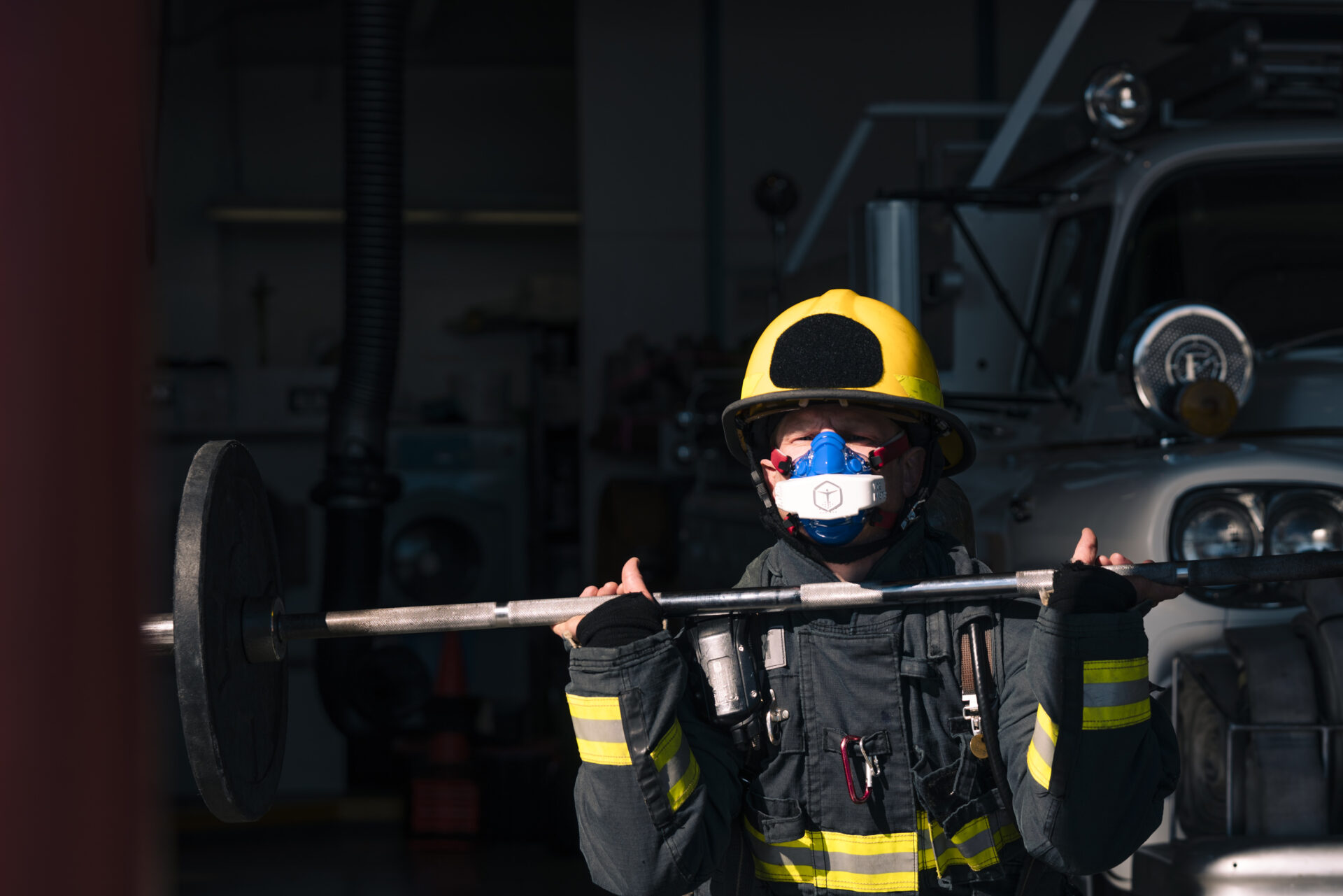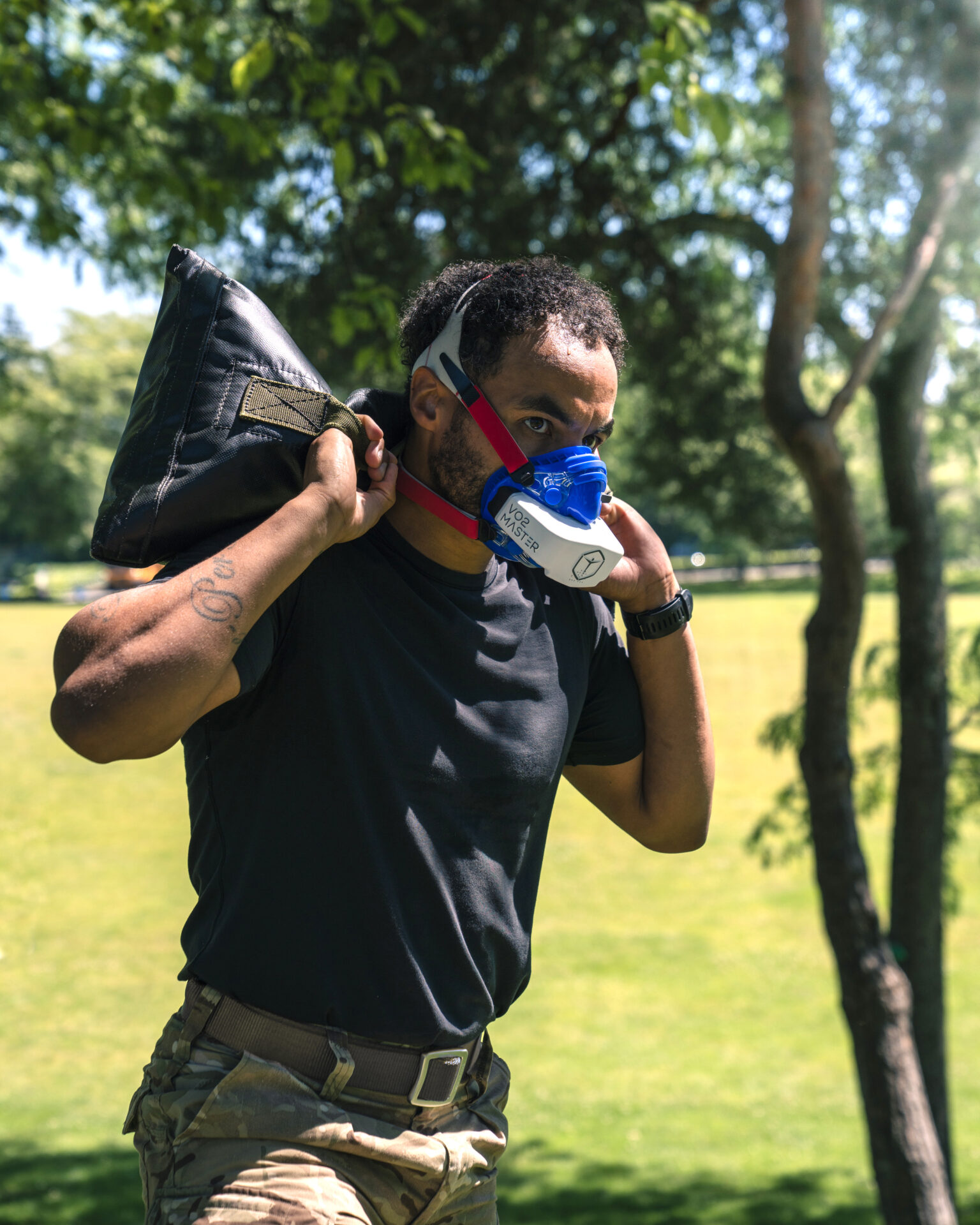Submaximal or VO2max Testing: What’s the Best Choice for Your Athlete or Client?
Written by Andrew Lambert, MKin. CSCS In recent years, VO2max testing has grown exponentially in the sphere of wellness, fitness, and elite sports. Influential physicians have touted the importance of raising and maintaining your VO2max for the purposes of improving fitness and increasing ‘healthspan.’ VO2max testing has been directly linked with longevity and preventing theContinue reading "Submaximal or VO2max Testing: What’s the Best Choice for Your Athlete or Client?"

Written by Andrew Lambert, MKin. CSCS
In recent years, VO2max testing has grown exponentially in the sphere of wellness, fitness, and elite sports.
Influential physicians have touted the importance of raising and maintaining your VO2max for the purposes of improving fitness and increasing ‘healthspan.’ VO2max testing has been directly linked with longevity and preventing the decline in function that can lead to a loss of independence in later life.
It’s no surprise that, in conjunction with these findings, portable VO2max testing with devices such as the VO2 Master has become an essential tool for sports scientists, trainers, coaches, nutritionists, and health and wellness practitioners throughout the world.
The VO2 Master provides accessibility to VO2max testing that has never been seen before in sports, university research centers, gyms, and wellness clinics. Users now have access to cutting-edge testing and data, which was previously only available through laboratory testing.
Gone are the wires and tubes and the need for highly trained lab technicians and five figure budgets.
In this article, we explore some different approaches to cardiopulmonary exercise tests (CPETs).
The purpose is to help you make an informed decision for your client regardless of their fitness or competitive level. We will define how a submaximal test differs from a maximal test and the outcomes (physiological data) that you will get from each.
We’ll also outline the criteria by which you might determine which test is appropriate for your clients and provide an overview of the different protocols that could be implemented for different populations. In addition, we’ll briefly discuss the intake process and how this might influence your decision-making process.
What is a VO2max test?
A VO2max test requires the ‘test subject’ to finish the test at an all-out, 10/10, or maximal effort.
A typical VO2max test protocol would start with a 10-minute warm-up at an intensity corresponding with a heart rate of around 100 bpm.
A Graded Exercise Test (GXT) involves incremental increases in speed or watts by the same amount every test stage until the individual cannot go any further (typically achieved in 8-12 stages).
A true ‘max ‘ is determined by:
- A 10/10 rating of perceived exertion (RPE)
- Possibly achieving a VO2 Plateau
- Achieving the age-predicted maximal HR
- Unable to maintain speed or watts despite encouragement
At the end of the test, the VO2 in ml/kg/min will be reported.
This can then be compared with normative data to show how the person who tested compares with others in their demographic, considering age and gender.
The VO2max score is a benchmark that allows the coach/trainer to provide recommendations to maintain or improve VO2max, and this methodical, data-driven approach can lead to improved fitness, performance, quality of life (QOL), and longevity.
It has been previously demonstrated that VO2max is a strong indicator of longevity and the ability to maintain independence in later life.
In the case of athletes, the coach or sports scientist will assess what level or range of VO2max is necessary for the sport the individual competes in and then test to ensure the athlete meets those standards.
As an example, the VO2max requirements for an elite 10K runner are entirely different from those of an NHL hockey player.
This type of test requires the subject to be physically able and mentally prepared to produce a maximal effort. It is also important to note that a VO2max test must be planned for and cannot be performed regularly due to the demanding nature of the test.
In the context of both athletes and fitness enthusiasts, the VO2max test may create fatigue that requires recovery time. This may interfere with imminent training sessions.
It’s important to note that the ‘maximal metrics’ from a VO2max test cannot be generated from a submaximal test. In addition to this, using estimates of VO2max from submaximal data is less accurate.
What is a Submaximal Test?
A submaximal CPET allows the coach or practitioner to perform a test without the test subject having to produce a maximal effort. It is a gentler testing procedure—the maximal effort required to produce a VO2max is very demanding.
A submaximal test requires the subject to perform a GXT, but rather than go to a 10/10 effort, they stop when they reach a defined cutoff.
The test cut-off can be determined by the type of information that is needed to assess the person, as well as the information required to design/inform a training program or race pace. Submaximal tests can provide very valuable information, including:
- The ventilatory thresholds: From this data, we can determine training zones one through four. For many people, identifying an accurate zone 2 intensity (up to VT) is the ‘big rock’ that will help build health and efficiency. For endurance athletes, measuring an accurate VT2 is a critical component for competition-specific intensities (e.g., Functional Threshold Power or Tempo). If you are interested, you can read more about the Ventilatory Thresholds here.
- The breathing/respiration strategy used up to 85% of max: This data can be used to assess respiratory efficiency, strength, and endurance and can be used to prescribe a training intervention if the respiratory system is identified as a limiter.
- Re-test capability: You can repeat the same protocol after 4-6 weeks of a training/exercise intervention. By analyzing the VO2 Master ventilation, VO2, and HR data, you can see the physiological adaptations that occurred following a training/exercise intervention. This assumes you used exactly the same protocol and were under the same conditions. Taking these steps satisfies test-retest validity.
Typically, a submaximal test would be stopped at ~85% of the maximal heart rate. If a current maximal heart rate is not available, we can use the RPE (Rating of Perceived Exertion) scale to determine when to stop the test.
How Can You Decide Which Test to Conduct?
There are many factors that will influence the type of testing you will perform and what protocols you will use. Here are some questions you might consider asking a client when deciding what type of protocol to use:
- Do you require the VO2max information at this stage in your client or athlete’s training/health journey? What information do you need to support decision-making regarding program design and/or advising your client/athlete?
- Is the person physically prepared for a VO2max test?
- Is the person mentally prepared for a VO2max test?
- Has the person who is testing been recently engaged in an exercise program, and have they recently performed high-intensity training (HIT)?
- Has the person specifically requested a VO2max test?
- Does the person have physical or health limitations that are contraindications to maximal testing?
It is the responsibility of the person performing the test to assess whether or not a VO2max test is appropriate.
We provide some basic screening questions/contraindications in the VO2 master User Manual. Other screening procedures can be found through the ACSM and through CSEP.
It is also important to understand that many individuals who come to you requesting a VO2max test may not fully understand what that entails.
They may not have engaged in activity, or strenuous activity, in recent times. They might describe themselves as sedentary. They may be overweight and may have limiting musculoskeletal issues. In these cases, the difficulty of the test may come as a surprise, and it is not uncommon for inexperienced/sedentary test subjects to stop the test prematurely. In this case, a submaximal test may have been a better choice.
It’s also important to discuss some of the emotions that may be associated with testing for the first time. It is common to witness test-related anxiety, which can be relative to the test itself (anticipation) or relative to the equipment.
However, sometimes, starting with a gentle submaximal test will be less anxiety-provoking as the expectation for a maximal effort is removed. There may also be some trepidation regarding the VO2max result itself and being compared with others. Starting with a submaximal test removes this expectation.
It may make sense in some cases to progress clients into VO2max testing if you have any concerns about their readiness to test. If your client is especially out of shape, overweight, or has medical issues that concern you, then a more gentle introduction to testing will likely be a better experience.
From a business perspective, you want your client to experience success and have a clear plan mapped out for their journey to improved health, wellness, and fitness. In some cases, it might make sense to ‘graduate’ your client into VO2max testing once they have achieved certain targeted gains in health and fitness. Generally, it is recommended that your athlete or client retest every 4-6 weeks to assess what changed.

What Testing Protocols Could You Use?
In future articles, we will take a deeper dive into different exercise testing protocols and their application. Below is a basic overview of protocols that would work well for submaximal testing:
The Bruce Protocol
The Bruce protocol is a treadmill test designed by cardiologist Robert Bruce in 1963. It is one of the most well-known and accepted exercise testing protocols. The Bruce protocol incorporates both incline and speed and for many people, a submaximal Bruce test can be finished at a brisk walking pace, therefore eliminating the need to run.
The Modified Bruce Protocol
This is an easier version of the Bruce Protocol that can be used with people who are assumed to have very poor conditioning and require an easier starting place.
Cycle ergometry
Using a watt or spin bike (ergometer is preferable), start at a low intensity and progress in increments that reflect the test subject’s current level of conditioning. Longer steps may be employed in a submaximal test (usually, 3 minutes is suggested). Longer steps allow us to reach homeostasis between oxygen supply and demand. Go to 85% of maximal HR or an 8-9/10 RPE if VT1 & 2 are required. Go to a 7/10 RPE if you only need to identify VT1 and the associated heart rate and intensity.
Other treadmill testing protocols
There are many different protocols that might be considered, and these may or may not incorporate both speed and incline. Similar to cycle ergometry, submaximal treadmill protocols will generally have longer stages and will terminate at 85% of HRmax or an 8/10 effort. A lower threshold of test termination might be appropriate if we simply want to determine VT and the associated zone 2 exercise intensity.
Other modalities
Portable VO2 testing offers many possibilities that were previously less accessible with a metabolic cart. Those involved in athlete preparation might consider sub-maximal testing outdoors in sport-specific conditions.
Whatever protocol you use, the health, wellbeing and progression of your client or athlete should be at the forefront of your decision-making process.
Some clients will be determined to start with VO2max testing and may have come to you specifically for a VO2max test.
Provided you have screened the person and determined they have no clear contraindications to maximal exercise testing, there is no reason to deny a VO2max test.
In customers who are in poor physical condition and/or have not been exercising regularly, creating a pathway to VO2max testing through submaximal testing might be a more appropriate starting point for your clients. In the case of athletes, performing submaximal testing will offer a variety of useful metrics to inform training methodology without creating fatigue which could interfere with training and preparation.

